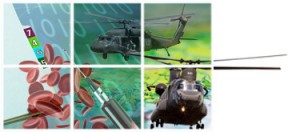MiNPAC allows analysts to discover emerging themes, trends, patterns of beliefs, sentiments, etc. from multi-source data and correlate these findings with structural and behavioral dynamics within the same or related social networks. This capability improves situational awareness, helping planners formulate more responsive COA plans to meet rapidly evolving, asymmetric threats.
Modern asymmetric warfare involves operational and strategic decision making under high levels of uncertainty. For course of action (COA) planning to be effective, decision makers must contend with the state of flux—the enemy’s shifting organizational patterns and methods of communication, growth and indoctrination, levels of preparation, policy shifts, advances in capability, new technology acquisition, deployment methods, etc.—that is the hallmark of modern warfare. Most pressing, and most challenging, is the need for accurate situational awareness at many levels, particularly in understanding a complex web of dynamic elements that includes demographic, political, military, economic, social, information, and infrastructure dimensions.
Situational awareness and effective COA planning can only be achieved by understanding the mechanics by which these networks operate and change: to, in other words, understand the formal laws and structures that govern the space of the enemy’s organizational dynamics. KBSI is developing, building, and validating a Multi-Source Network Pulse Analyzer and Correlator (MiNPAC) that is capable of both sensing emerging themes, trends, patterns of beliefs, sentiments, etc. from multi-source data from large social networks and correlating these findings with structural and behavioral dynamics within the same or related social networks.
 The MiNPAC technology allows users to characterize the state space of the focus social networks and situate the asymmetric entities that operate in this space. This allows analysts to develop the computational models that help explain the behavior and evolution of these entities and, by extension, the networks. With this knowledge, users can, for example, discover the relationship between beliefs emerging within online forums related to a particular community and the structural or behavioral changes within a social network of interest associated with that community. What can these relationships tell us and how can this information help in effective COA planning?
The MiNPAC technology allows users to characterize the state space of the focus social networks and situate the asymmetric entities that operate in this space. This allows analysts to develop the computational models that help explain the behavior and evolution of these entities and, by extension, the networks. With this knowledge, users can, for example, discover the relationship between beliefs emerging within online forums related to a particular community and the structural or behavioral changes within a social network of interest associated with that community. What can these relationships tell us and how can this information help in effective COA planning?
The MiNPAC technology will provide innovative new capabilities that will help field commanders rapidly and reliably perform COA planning. These capabilities will significantly reduce the time and effort needed to convert distributed data into action enabling information for decision making in the dynamic environments that characterize today’s asymmetric conflicts.
